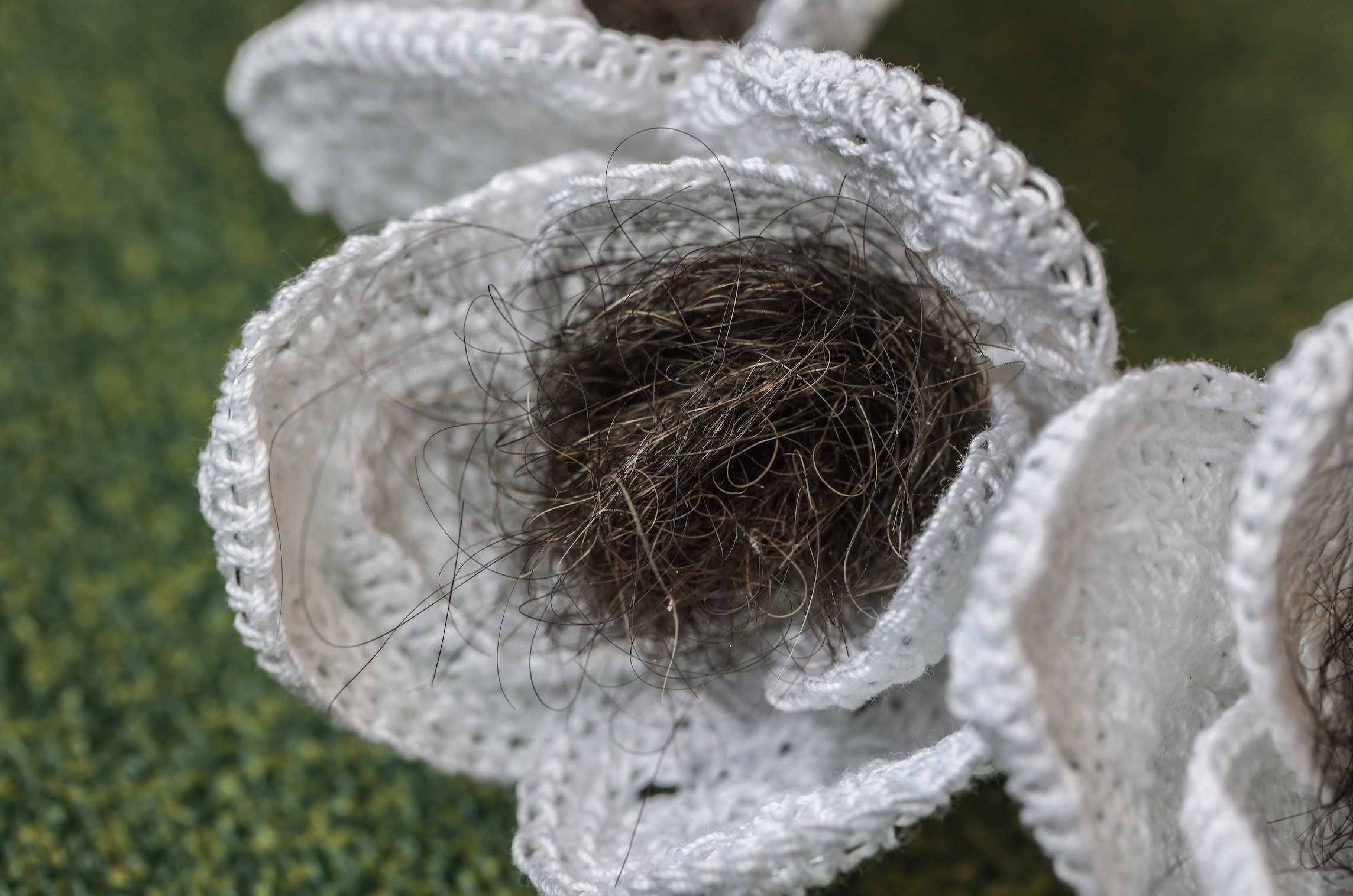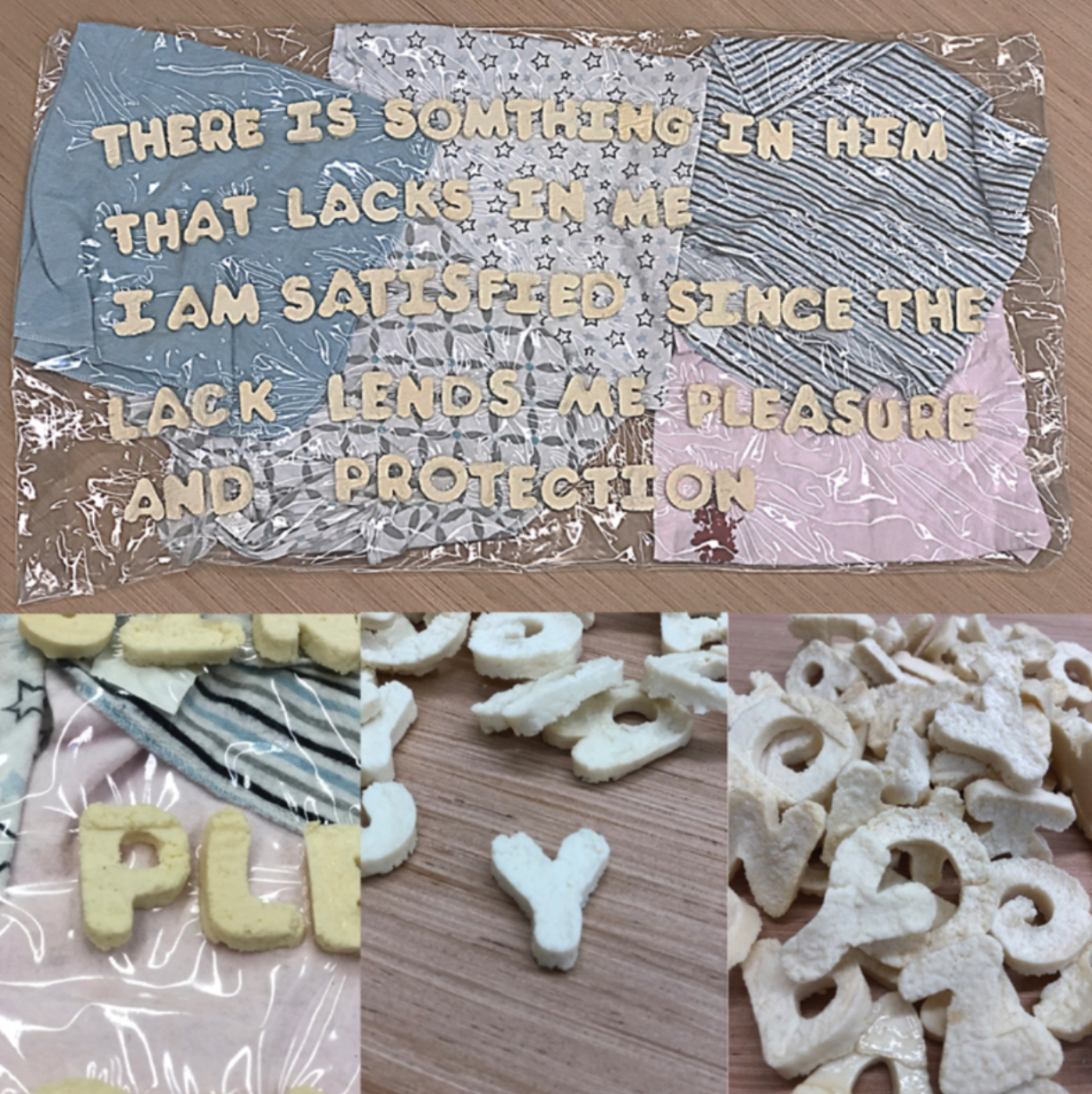
Title: Zaban Hagh is bitter and heavy Materials: Steel Farsi text, Plaster caste mouth Date: 2023-2024
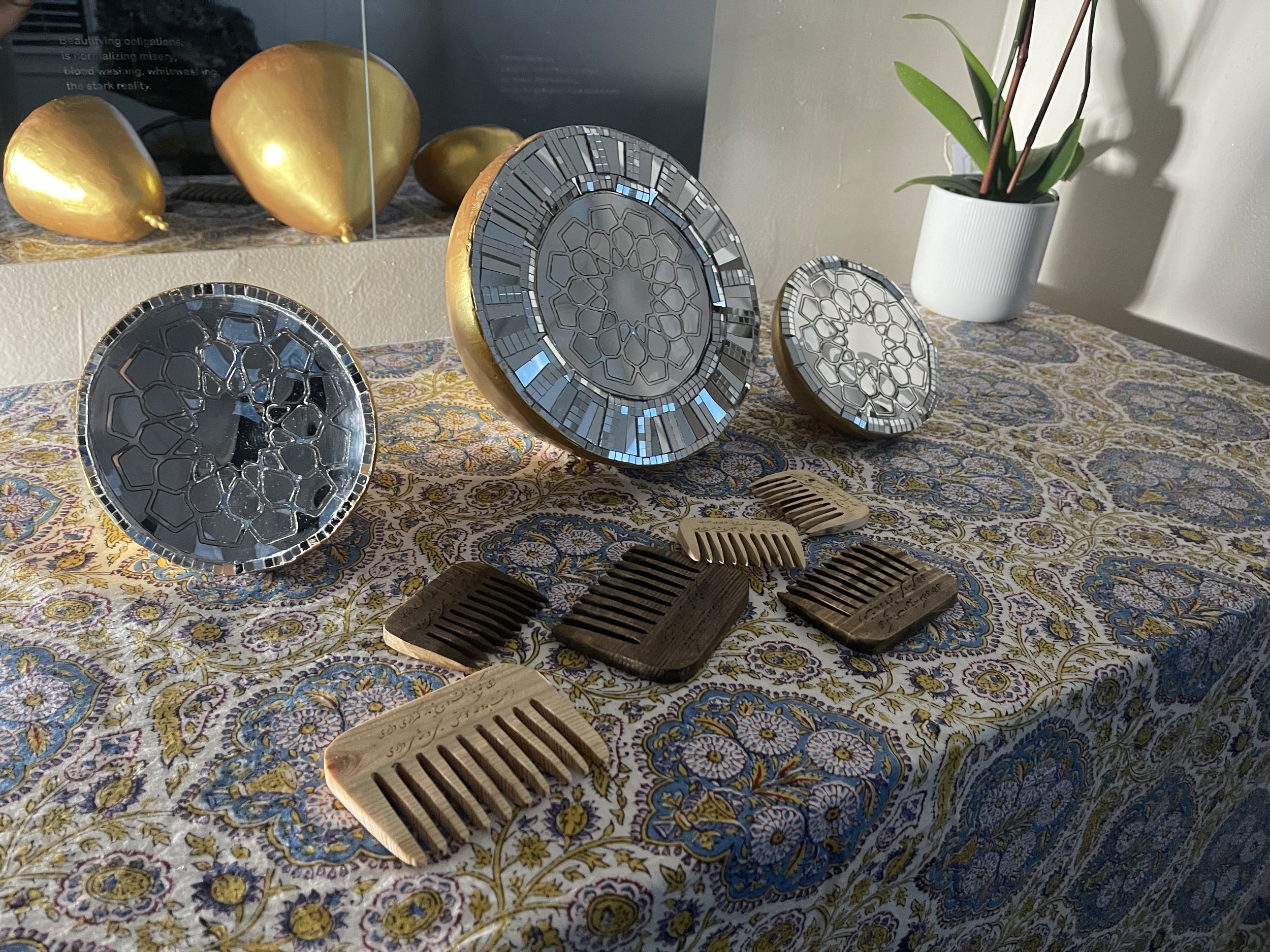
Untitled #1 laser cut my poetry on mirror , laser cut persian poetry on handmade wooden comb, mirror tile, foam, 3D printing, gold paint 2024

Untitled #2

Untitled#3

Untitled #4
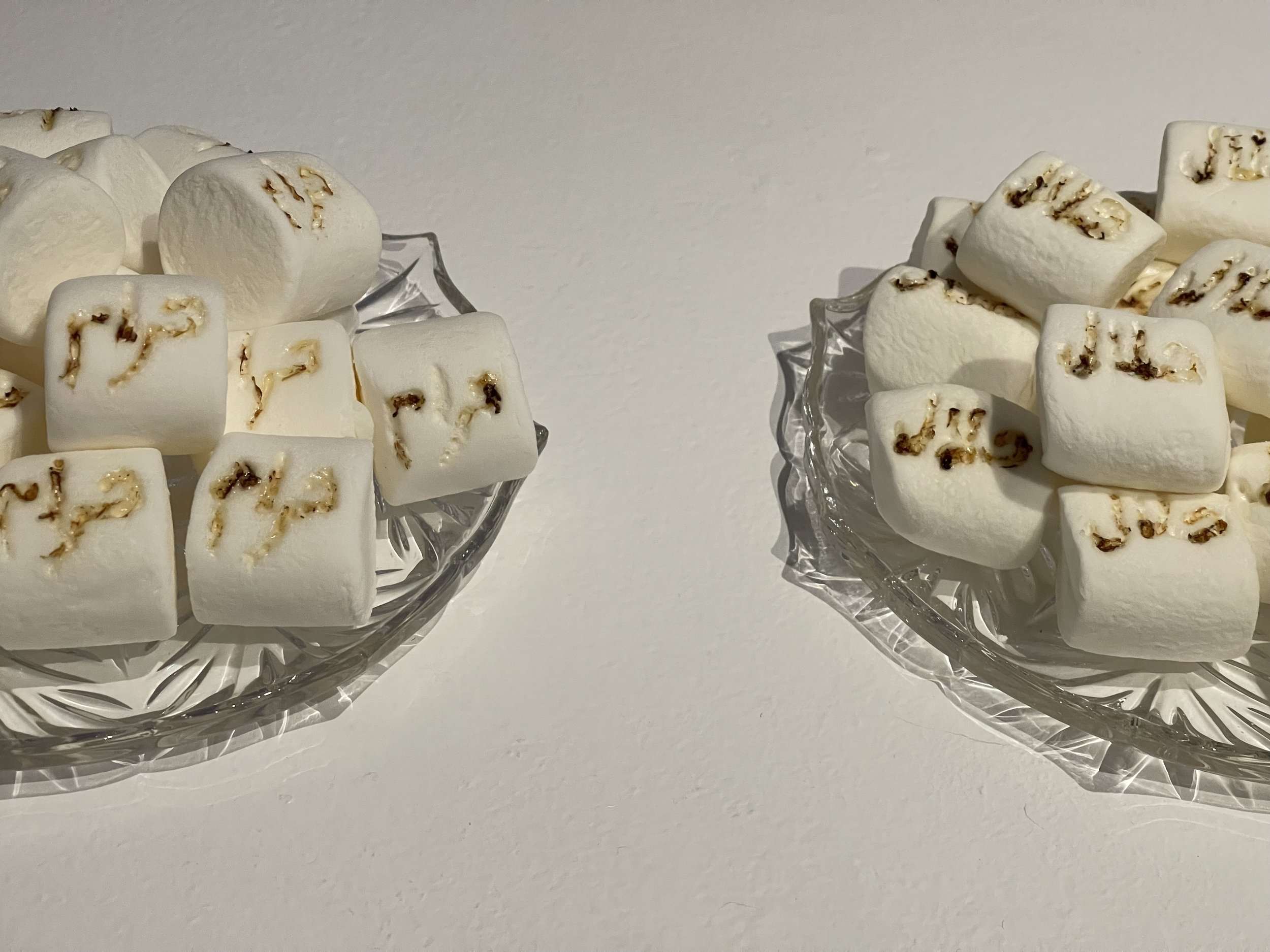
Title: Halal & Haram Medium: burning on marshmaloo Date: 2023

Title: Halal & Haram (Details)
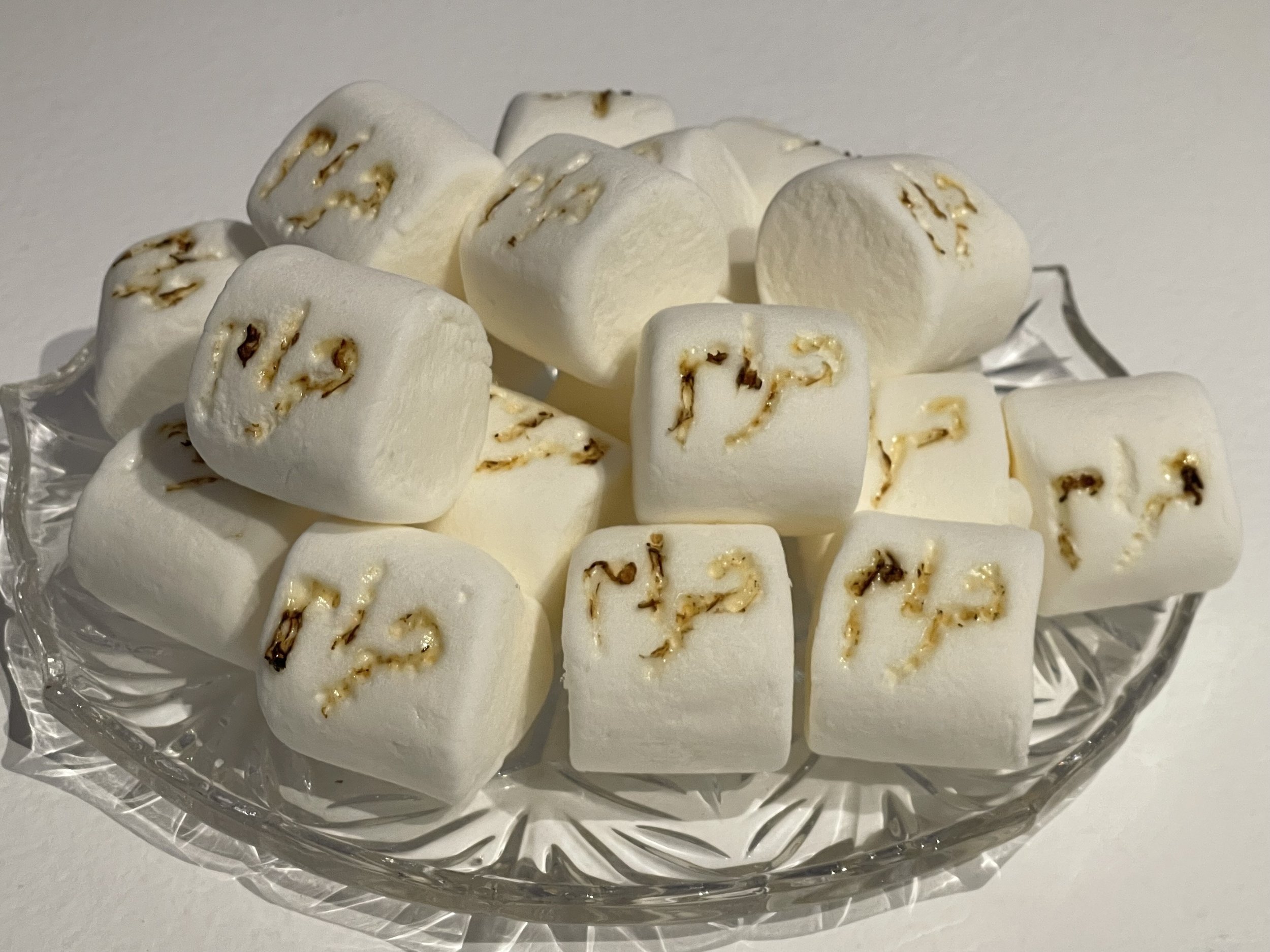
Title: Halal & Haram (Details)

Title: Kojaa (from Homecoming) Medium: Installation, embroidery on empty beer can Date: In progress کجا - Where (Koja) کجایی- Where Are You (Kojaee) هر کجایی -Anywhere you are (Har Kojaee) هر کجا - Anywhere (Har Koja) هرجایی - Everywhere (In Persian slang this word , Har Jaee, means slut )

Title: Ghahr & Ashti (from Homecoming project) Medium: Installation, Female hair, found plastic, Arduino, Led lights, Buzzer, motion sensor Date: In progress Using a found piece of plastic to sew hairballs to it. I use will sew led lights to sew the pattern highlighted above. The pattern is from Pateh a traditional needlework folk art belonging to Kerman a province located in the South-East of Iran. I will use sound for this piece. The sound is from the protest of the Iranian people against climate change and the water shortage crisis, which happened last summer. Several people were shot and killed by the government forces.
Tangled , Hair and fabric, 2022 Veil as a piece of clothes has become an ongoing negotiation for the liberation of my feminine body. The process of Unveiling, veiling and reveling have become complex question for me. Sometimes I lost where my particular experiences are from and where my practice can fit. And I think this is the time that the representation of this ambiguity is important and has the material effect to challenge this space of uncertainty and finally the representation become an individual expression. The distinction between a woman and a real woman is recognized through essential difference in the representation (a woman as cultural imago) and experience (real woman as agent of changes). The repeating pattern of hair threading on the rectilinear shapes of grid pattern fabric, called Chafiyeh or Qafiyeh features a dialogue between my body and the patriarchal power structure of Islamic Republic of Iran. I allow the female hair find its new reception, new connection, and its new effect. The work enacts self as a site of exchange for the materiality of my body with other objects, the presentation of self is understood not to be about the insufficiency of my femininity, but rather it is the enactment of the complexity exists inside the mechanisms of patriarchy.
Interweave , embroidery, fabric, hair, 2022 The work is an installation and there is an embroidered text within my hair. The text is from a traditional poet, Hafez, who is still very famous in Iran. Hafez (1315-1390) Khwāja Shams-ud-Dīn Muḥammad Ḥāfeẓ-e Shīrāzī, known by his pen name Hafez and as "Hafiz", was a Persian poet who " but also targeted religious hypocrisy”. His poems are still important in contemporary Iranian culture. The embroidered text in the work: ناز بنیاد مکن تا نکنی بنیادم زلف بر باد مده تا ندهی بر باد Zolf bar bad madeh ta nadahi bar badam Naz bonyad makon ta nakoni bonyadam The translation of the poet in English: Don’t let your hair with the wind blow Else to the wind, Caution I’ll throw In the background of the text I embroidered some drawings from several photographs depict the moral police of Iran asking women to cover their hair.

